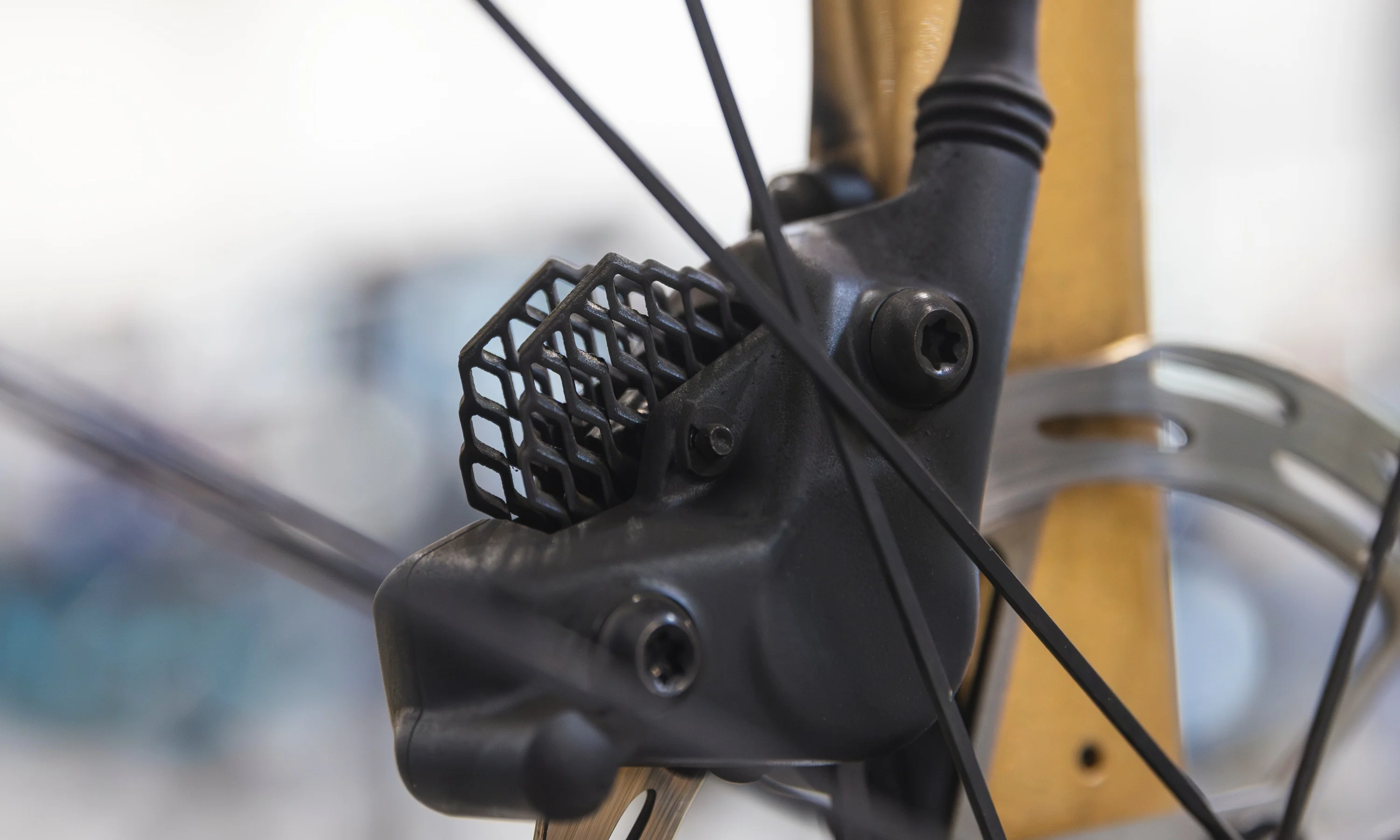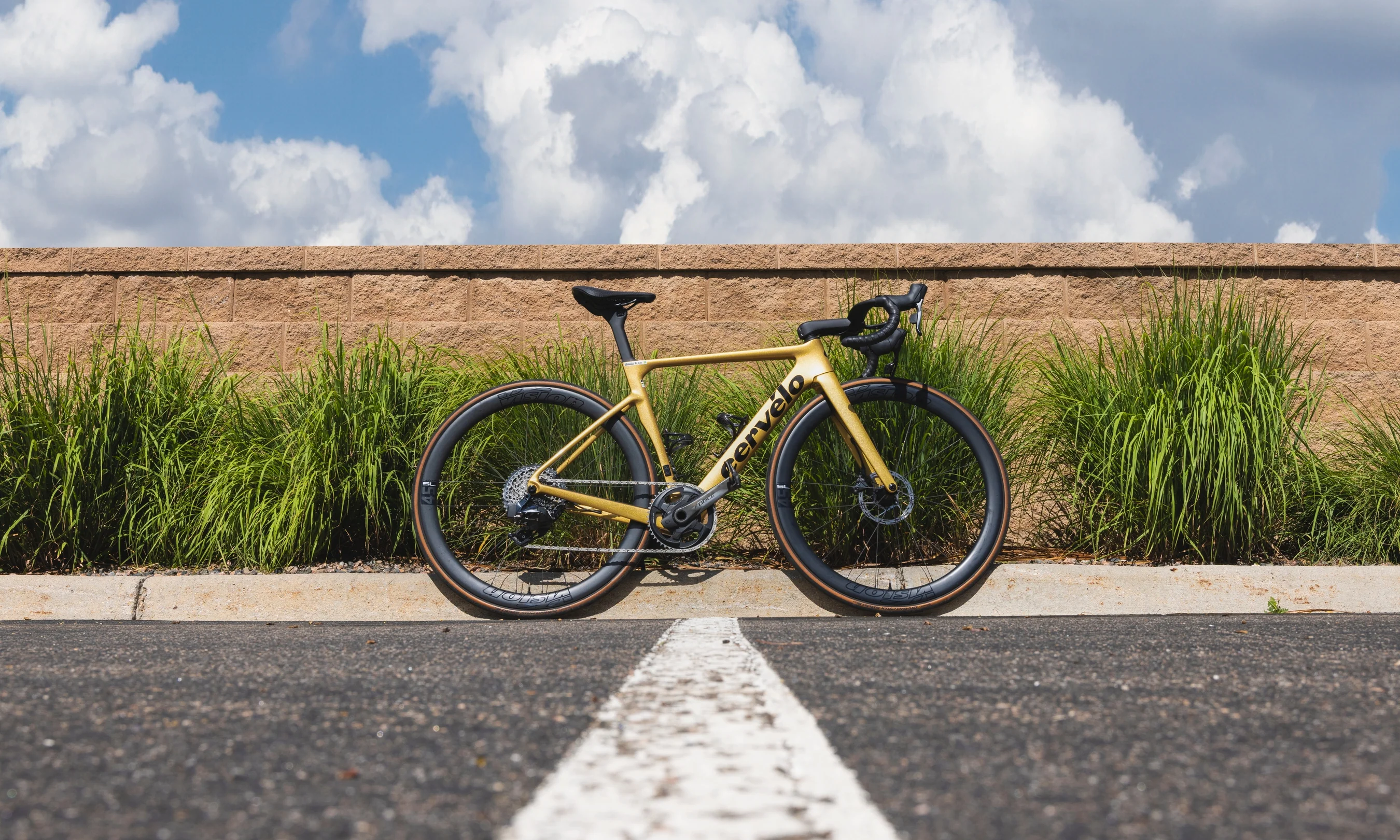Electronic drivetrains are the future of cycling, and for the last two years, SRAM’s wireless Red eTap AXS and Force eTap AXS groups have been at the top of the food chain. The effortless shifts, easy installation, user-friendly customization, and clean, cable-free cockpits have made them a must-have for high-end road and gravel bikes.
 Now, a more affordable little brother has joined the AXS family. Meet Rival eTap AXS. With Rival, more riders can upgrade their ride with a fully wireless design, X-Range gearing, and an integrated Quarq power meter. If you’ve been itching to ride AXS technology, Rival eTap AXS might be the group you’ve been waiting for.
Now, a more affordable little brother has joined the AXS family. Meet Rival eTap AXS. With Rival, more riders can upgrade their ride with a fully wireless design, X-Range gearing, and an integrated Quarq power meter. If you’ve been itching to ride AXS technology, Rival eTap AXS might be the group you’ve been waiting for.
Rival eTap AXS key features:
- Proven AXS technology at a more affordable price.
- Fully wireless design with no cables, housing, or wires to manage.
- A new $249 spindle-based Quarq power meter.
- “Wide” crankset and front derailleur options for gravel bikes.
- X-Range gearing compatible with 10-36t cassette.
- Compatible with all other AXS components.
- AXS app allows users to customize shift options.
Rival eTap AXS pricing:
- Complete group (includes batteries, charger, brake rotors, and bottom bracket)
- 2x with power meter - $1,640
- 2x no power meter - $1,420
- 1x with power meter - $1,409
- 1x no power meter - $1,190
- Individual components
- Shifter and hydraulic disc brake - $200
- Crankset - $130
- Quarq power meter crankset - $349
- Power meter upgrade (spindle only) - $249
- Front derailleur (battery not included) - $175
- Rear derailleur (battery not included) - $370
- Cassette - $125
- Chain - $30
Rival eTap AXS shifters and brakes
 Rival AXS shifters have a new, revised shape, designed to fit hands of all sizes and provide powerful braking from both the hoods and drops. The hoods and shifter paddles feature a new ribbed texture for more comfort, grip, and control. The brake levers are aluminum, and the lever reach is adjustable so you can personalize your fit. Rival is only available with hydraulic disc brakes.
Rival AXS shifters have a new, revised shape, designed to fit hands of all sizes and provide powerful braking from both the hoods and drops. The hoods and shifter paddles feature a new ribbed texture for more comfort, grip, and control. The brake levers are aluminum, and the lever reach is adjustable so you can personalize your fit. Rival is only available with hydraulic disc brakes.
Rival AXS shifters pair with any other component in the AXS line-up, including Eagle AXS rear derailleurs, for riders interested in a wide-range “mullet” set-up — a 10-50T cassette with a single chainring. As with all products in the AXS ecosystem, the AXS app allows riders to adjust shifting modes, personalize their controls, and gain insight into how they use their drivetrains.
Rival eTap AXS cranksets
 The Rival crankset uses polished aluminum arms that are stiff, tough, and come in a variety of lengths (160mm-175mm). Double cranksets use X-Range gearing, with a smaller 13-tooth gap between chainrings, and are available in 48/35t or 46/33t.
The Rival crankset uses polished aluminum arms that are stiff, tough, and come in a variety of lengths (160mm-175mm). Double cranksets use X-Range gearing, with a smaller 13-tooth gap between chainrings, and are available in 48/35t or 46/33t.
Gravel and adventure riders might prefer the Rival 43/30t wide crankset, with its lower gearing and wider stance (150.5mm q-factor vs. 145.5mm) to match gravel bike chainlines and clear tires up to 700x45c or 27.5x2.1”. The wide crank requires a matching wide front derailleur.
If you want to ditch the front derailleur altogether or fit even wider tires, there is also a single-ring Rival 1 wide crankset. It uses SRAM’s narrow-wide direct-mount X-SYNC chainrings that provide chain retention in rough terrain. Direct-mount chainrings are available in 38t through 46t in two-tooth increments.
Read more about the difference between 2x and 1x drivetrains on gravel bikes.
Wide cranksets use a longer DUB spindle that will fit either road and mountain bike bottom brackets for maximum frame compatibility. They are compatible with 135mm, 142mm, and 148mm Boost rear axle spacing.
Rival eTap AXS Quarq power meter
 Perhaps the most enticing feature of the Rival AXS group is the new, more affordable, spindle-based Quarq power meter. Quarq’s crank-based power meters have become legendary for their accuracy and reliability. With Rival eTap AXS, the power meter is now entirely contained within the DUB spindle, adding only 40 grams to a complete crankset. The spindle-based unit measures left side power and doubles it to calculate total watts.
Perhaps the most enticing feature of the Rival AXS group is the new, more affordable, spindle-based Quarq power meter. Quarq’s crank-based power meters have become legendary for their accuracy and reliability. With Rival eTap AXS, the power meter is now entirely contained within the DUB spindle, adding only 40 grams to a complete crankset. The spindle-based unit measures left side power and doubles it to calculate total watts.
Complete Rival power meter cranksets comes in standard and Wide versions. The power meter spindle can also be purchased alone, to instantly upgrade any DUB road or road wide crankset. The power meter has a long, 400+ hour battery life and uses a replaceable lithium AAA battery.
Rival eTap AXS derailleurs
 Rival AXS derailleurs feature the same shifting precision and reliability as their Force and Red AXS siblings. The Rival AXS front derailleur is optimized for X-Range chainrings and uses Yaw technology, so there’s no need for trim to compensate for extreme gear combinations. The Rival AXS wide front derailleur is designed for smaller 43/30t X-Range chainrings on wide cranks and provides clearance for 700x45c and 27.5x2.1” tires.
Rival AXS derailleurs feature the same shifting precision and reliability as their Force and Red AXS siblings. The Rival AXS front derailleur is optimized for X-Range chainrings and uses Yaw technology, so there’s no need for trim to compensate for extreme gear combinations. The Rival AXS wide front derailleur is designed for smaller 43/30t X-Range chainrings on wide cranks and provides clearance for 700x45c and 27.5x2.1” tires.
The Rival AXS rear derailleur uses a spring clutch that improves chain retention over rough surfaces and keeps the drivetrain quiet and free of chain slap. It can be used with 1x or 2x drivetrains and is compatible with all X-Range cassette options fitting up to a 36-tooth cog.
Rival eTap AXS cassette and chain
 Rival takes advantage of X-Range gearing, which uses tighter jumps between the chainrings and 12-speed cassettes to give riders more gear range and smoother gear progression. It uses a nickel-chrome plated cassette with full pin construction for durability and light weight. It requires a hub with an XDR driver body and is available in 10-30t and 10-36t configurations.
Rival takes advantage of X-Range gearing, which uses tighter jumps between the chainrings and 12-speed cassettes to give riders more gear range and smoother gear progression. It uses a nickel-chrome plated cassette with full pin construction for durability and light weight. It requires a hub with an XDR driver body and is available in 10-30t and 10-36t configurations.
To pair with the Rival AXS 12-speed chainrings and cassettes, there is a matching Rival AXS Flattop chain. The Flattop design allows for a narrower chain without compromising strength or durability. It is compatible with 1x and 2x eTap AXS drivetrains.
Rival eTap AXS vs. Force eTap AXS vs. Red eTap AXS
 Rival AXS provides a more affordable alternative to the Force eTap AXS group and the top-of-the-line Red eTap AXS group. So what compromises are made to bring down the cost?
Rival AXS provides a more affordable alternative to the Force eTap AXS group and the top-of-the-line Red eTap AXS group. So what compromises are made to bring down the cost?
Rival eTap AXS weight
To reduce costs, there is a slight weight penalty. With 48/35t chainrings, 175mm cranks, a 10-30t cassette, and hydraulic disc brake calipers, the claimed weight of a complete Rival eTap AXS group is 2,783 grams. A Force eTap AXS group with a similar set-up weighs 2,600 grams, a difference of 183 grams. The difference to Red eTap AXS is 541 grams. The weight differences come down to materials and construction.
The two most obvious material differences are found in the brake levers and crank arms. Rival uses aluminum brake levers and crank arms, while Force uses composite brake levers and solid carbon crank arms. Red uses carbon brake levers and hollow carbon crank arms. With the same chainrings, the aluminum Rival crankset weighs 100 grams more than the carbon Force crankset. There are similar, less visible material choices other components. The Rival rear derailleur, for example, has steel bearings, steel hardware, and an aluminum pulley cage.
Rival cassettes feature a different construction. Red cassettes are machined out of a single block of steel to minimize weight. Force cassettes use a “mini cluster” hybrid design, where the four small cogs are machined out of a single block of steel, and then eight additional cogs are individually pinned together to form the cassette. The Rival cassette uses a fully pinned design, where 12 individual cogs are pinned together, increasing the weight by about 20 grams over a comparable Force cassette. Rival and Force chains also use solid pins while Red uses lighter, hollow pins.
Weight comparison table:
|
Rival eTap AXS |
Force eTap AXS |
Red eTap AXS |
|
|
Price (2x, disc, no power meter) |
$1,420 |
$2,000 |
$2,500 |
|
Complete weight (no bb or rotors) |
2,783g |
2,600g |
2,242g |
|
Shifters and brakes |
845g |
822g |
749g |
|
Crankset (48/35t, 175mm cranks) |
844g |
744g |
561g |
|
Front derailleur |
180g |
176g |
167g |
|
Rear derailleur |
366g |
326g |
299g |
|
Cassette |
282g (10-30t) |
266g (10-28t) |
211g (10-28t) |
|
Chain |
266g |
266g |
255g |
Rival eTap AXS design differences
Rival eTap AXS 2x cranksets use an integrated spider, while Rival 1x cranksets have a single direct mount chainring. You will not be able to swap between 2x and 1x set-ups like you can with the Force and Red cranksets.
The hood shape for the Rival eTap AXS shifter has changed to a narrower grip than Force or Red. This narrower grip is possible because Rival eTap AXS doesn’t have contact point adjustment for the brakes, and also does not allow for blips (auxiliary remote shift buttons). Force can add one blip per shifter and Red two blips per shifter.
The Rival AXS rear derailleur uses a spring clutch rather than the Orbit Fluid Damper found on the Force and Red AXS rear derailleurs. The Orbit Fluid Damper provides chain retention using fluid resistance. The spring clutch in the Rival rear derailleur provides the same function but with simpler tech.
The new Rival Quarq power meter is also a departure from the spider-based Quarq power meters found on Force and Red. Because the Rival power meter is spindle-based, it only reads power from the left crank arm. This number is then doubled to provide total power for the right and left leg. on the other hand, a spider-based unit reads total power, so it is more accurate. For most riders, left-only power meters accurate enough for training and tracking their progress.
Purchased as a standalone upgrade, the power meter spindle is $100 less than a Quarq power meter spider (without chainrings) and $470 less than the integrated power meter and one-piece chainrings used on Red AXS.

























